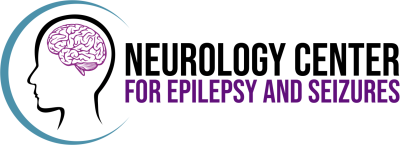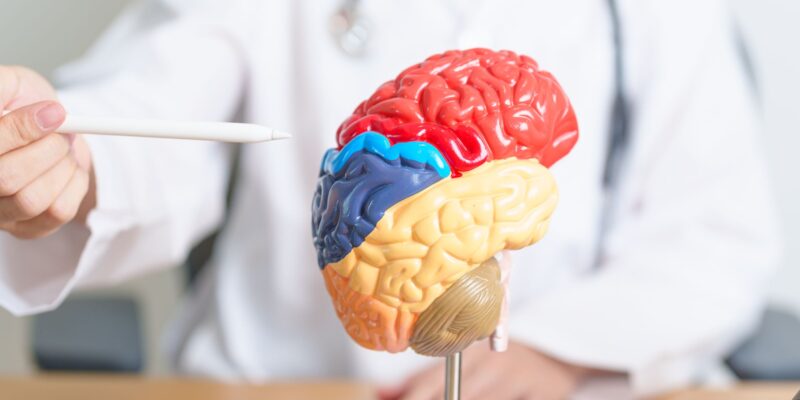Can problems in your inner ear really trigger seizures? The link between balance and brain…

What’s the Difference Between Cluster Headaches and Migraines?
Cluster headaches and migraines are both intense headaches that can be debilitating for those who suffer from them. However, there are key differences between the two conditions that can help differentiate them. Understanding these differences is crucial for proper diagnosis and treatment. By gaining a better understanding of these two types of headaches, individuals and healthcare professionals can work together to effectively manage and alleviate the pain and discomfort associated with these conditions.
Primary Difference Between the Two Types of Headaches
Cluster headaches are characterized by excruciating pain that is usually felt around one eye or on one side of the head. The pain is often described as burning, piercing, or throbbing and can last anywhere from 15 minutes to 3 hours. These headaches are relatively rare, affecting about 0.1% of the population, and are more commonly seen in men.
On the other hand, migraines typically cause a throbbing pain that is felt on one or both sides of the head, often accompanied by nausea, vomiting, and sensitivity to light and sound. Migraines can last anywhere from 4 to 72 hours and are more common, affecting about 12% of the population, and are more commonly seen in women.
Triggers for cluster headaches include alcohol consumption, strong odors, and changes in sleep patterns, while triggers for migraines can include hormonal changes, certain foods, stress, and changes in weather. Cluster headaches often occur in clusters or cycles, with multiple attacks happening over a period of weeks or months, while migraines can occur less frequently but with longer durations.
Differences in Pain Severity
Cluster headaches are known for their intensely severe pain, often described as one of the most severe types of pain a person can experience. The pain is usually located behind one eye occurring several times a day during a “cluster period”. On the other hand, migraines can range from moderate to severe in intensity, with the pain typically located on one side of the head and lasting anywhere from a few hours to several days.
The specific symptoms of cluster headaches include a stabbing or burning sensation, along with nasal congestion, watery eyes, and restlessness. Migraines, on the other hand, are typically accompanied by symptoms such as nausea, vomiting, and sensitivity to light and sound.
These differences in pain severity, location, and accompanying symptoms are crucial in determining the most effective treatment for each condition. Because cluster headaches are so intensely painful and happen repeatedly, treatments that provide fast and effective relief during an attack are prioritized. Migraines, with their varying levels of severity and longer duration, require treatment options that address both immediate pain relief and prevention of future attacks.
Differences in Duration
Cluster headaches are known for their short but excruciating duration, often lasting between 15 minutes to 3 hours. They occur in clusters, hence the name, and can happen multiple times a day for weeks or months, followed by a period of remission. On the other hand, migraines typically last longer, ranging from 4 hours to 72 hours, and may occur a few times a month for some individuals.
The impact of these differences is that individuals with cluster headaches may experience more frequent, but shorter duration attacks, which can still significantly disrupt their daily activities. In contrast, individuals with migraines may have longer-lasting but less frequent attacks, still impacting their ability to function for an extended period. Both types of headaches can have a profound effect on an individual’s quality of life.
Differences in Light Sensitivity
Individuals experiencing cluster headaches and migraines both commonly report light sensitivity, however, the differences in the severity and nature of this sensitivity can be notable.
People with cluster headaches often experience extreme light sensitivity during an attack, to the extent that exposure to even low levels of light can exacerbate the already intense pain. It is not uncommon for individuals suffering from cluster headaches to seek out dark, quiet environments to alleviate their discomfort.
On the other hand, light sensitivity during migraines can also be significant but is generally less pronounced than in cluster headaches. While some migraine sufferers may experience severe discomfort in bright light, for others, it may simply be a discomfort or exacerbating factor rather than a central aspect of the headache experience.
Differences in Family History
Cluster headaches and migraine disease have different family history patterns when it comes to genetic tendencies.
Cluster headaches are thought to have a strong genetic component, with a higher prevalence within families. Research suggests that individuals with a family history of cluster headaches are more likely to develop the condition themselves, indicating a hereditary link. This suggests that there may be specific genetic factors that increase the likelihood of developing cluster headaches within certain families.
On the other hand, while migraine disease also has a genetic component, it may not be as strong as that of cluster headaches. Studies have shown that having a family history of migraines can increase the likelihood of developing the condition, but the inheritance pattern is more complex compared to cluster headaches.
Symptoms of Cluster Headaches and Migraines
Cluster headaches and migraines are both severe and disabling types of headaches that can significantly impact a person’s quality of life. It is important to be able to recognize the specific symptoms of each condition in order to seek appropriate treatment and management.
Signs and Symptoms of Cluster Headache Attacks
Cluster headache attacks are characterized by sudden onset of intense, debilitating pain, usually located around one eye or on one side of the head. Other common signs and symptoms include restlessness, agitation, red and watering eyes, nasal congestion, and drooping eyelids. The pain is often described as excruciating and may be accompanied by facial sweating or flushing.
Cluster headache attacks tend to occur with remarkable regularity, often at the same time each day or night. These attacks can happen multiple times a day, typically clustering together for several weeks or months before going into remission for a period of time. For some individuals, there may be seasonal patterns, with cluster headaches occurring at specific times of the year.
Signs and Symptoms of Migraine Attacks
Migraine attacks are often characterized by a throbbing head pain, which is usually felt on one side of the head. This intense pain can last for hours or even days and is often accompanied by symptoms such as nausea, vomiting, light sensitivity, and temporary loss of vision.
Some migraine episodes are associated with auras, which are sensory disturbances that develop about an hour before the headache. These auras can manifest as visual disturbances, such as seeing flashes of light, blind spots, or zigzag lines. They can also include sensory, motor, or verbal disturbances. Auras typically last for a few minutes to an hour and are often followed by the onset of the migraine headache.
Treatment of Cluster Headaches vs. Migraines
Cluster headaches and migraines require different treatment approaches due to their unique characteristics.
For cluster headaches, the primary treatment goal is to quickly relieve the severe pain. Triptans, such as sumatriptan, are commonly used to abort cluster headache attacks. Oxygen therapy and intranasal lidocaine can also provide relief. Additionally, preventive measures such as daily medication with verapamil or corticosteroids may be prescribed to reduce the frequency and severity of attacks.
Migraines, on the other hand, often involve a more holistic treatment approach. Triptans are also used for migraine relief, but other medications such as nonsteroidal anti-inflammatory drugs (NSAIDs), antiemetics, and ergotamine derivatives may be utilized. Preventive medications like beta blockers, antidepressants, and anticonvulsants may be prescribed for chronic migraines. Lifestyle changes, stress management, and identifying triggers are also crucial for managing migraines.
Recognizing the unique characteristics of each headache type is essential for determining the most effective treatment plan. Understanding the distinct symptoms, triggers, and response to medications allows healthcare providers to tailor treatment to the specific needs of individuals with cluster headaches or migraines. This personalized approach is fundamental in achieving successful management and relief for sufferers of these headache disorders.



